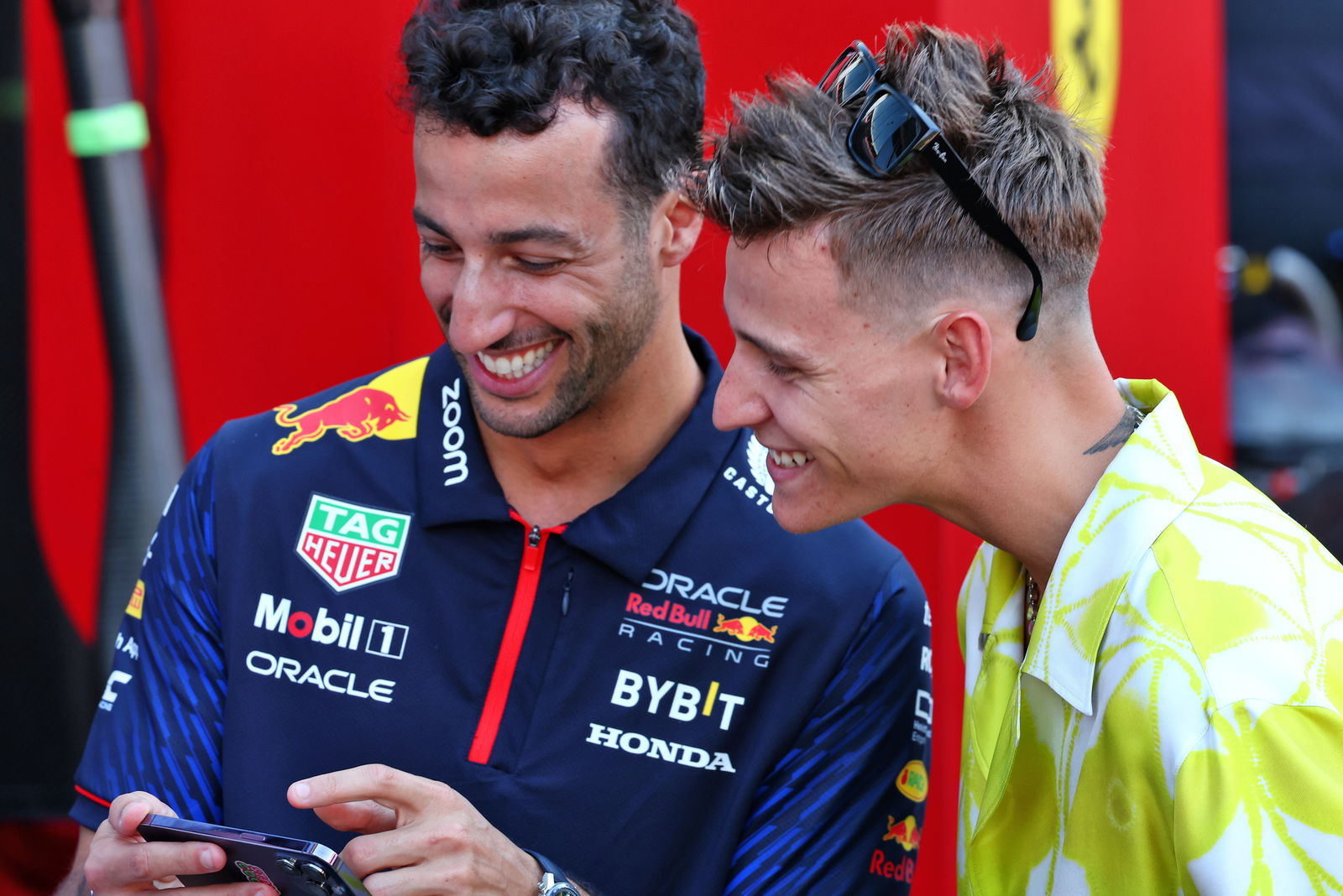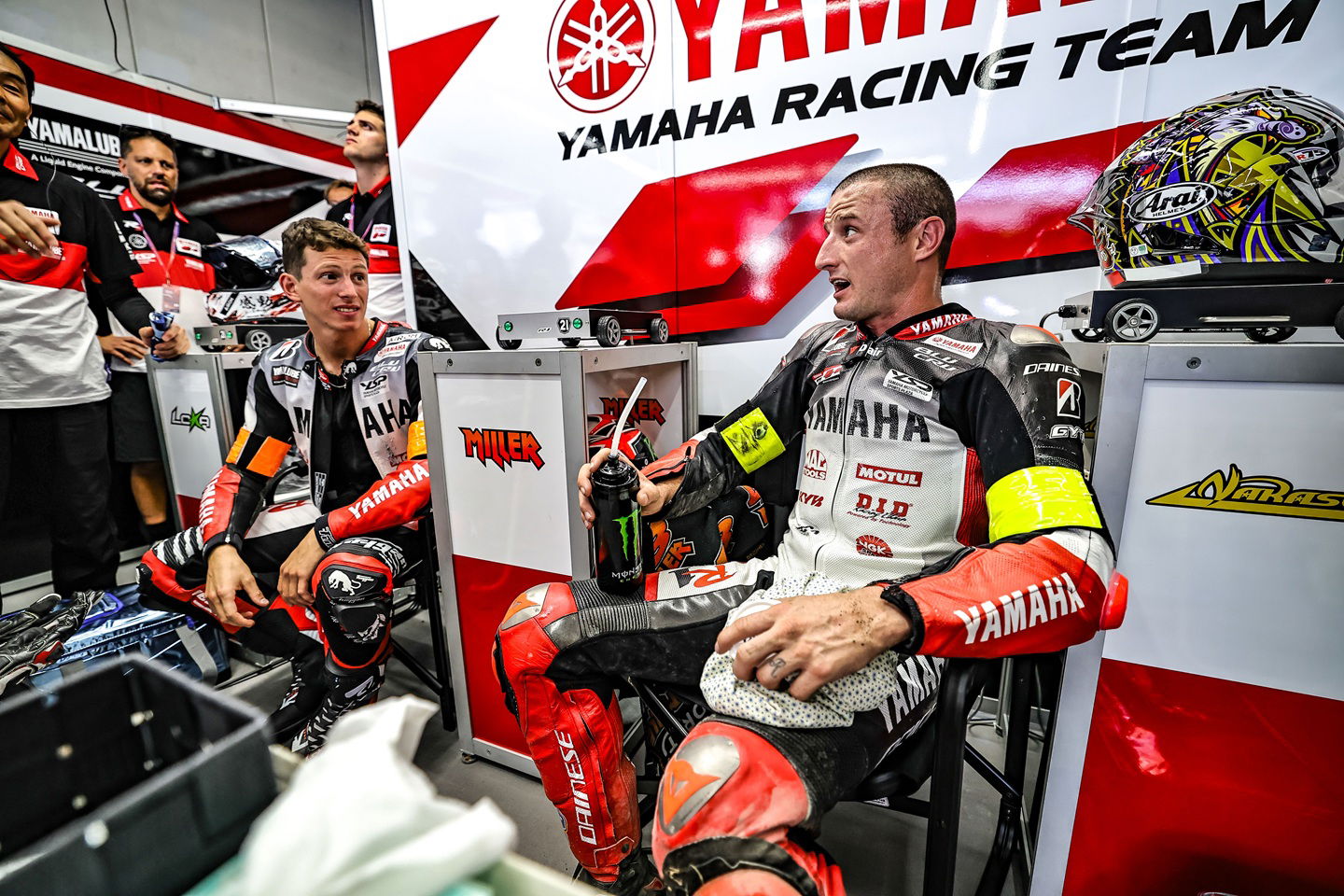The door may be open for a joint F1/MotoGP round - but is it really needed?
With Liberty Media taking over ownership of MotoGP, chatter of a joint event with F1 has picked up again. While MotoGP is open to the idea, there are a lot of pitfalls that would likely stop any event from happening. Moreover, does MotoGP actually need it?

“Everything is worth a try once.” Carlos Ezpeleta, Dorna’s chief sporting officer’s, response to a recent Speedweek question about the potential for a joint MotoGP/Formula 1 round suggests the door very much remains open to this possibility becoming a reality in the future.
Over the years, Dorna and MotoGP have floated the idea and loosely looked into what would have to be done to make it work. Arguably the biggest step towards this came earlier in July this year, when Liberty Media’s €4.2 billion acquisition of MotoGP was given unconditional EU approval.
Now the American media giant owns the two biggest motorsport championships in the world. And a lot of crossover is expected as Liberty looks to apply what it has learned in F1 to growing MotoGP’s global footprint.
Rumours for over a year now of Lewis Hamilton team ownership and the recent Guenther Steiner interest in investing in Tech3 are just the start of these two world’s colliding for what Liberty will see as the good of MotoGP.
What the next phase of Liberty’s ownership will look like is yet to be seen, and likely won’t be for at least another year. The 2026 calendar showed no real surprises, while the current Dorna regime remains at the helm. It is widely assumed at some point over the next few years, Liberty will look to slowly move on from the Ezpeleta leadership that has steered the series since Dorna took over as commercial rights holder in 1992.
After all, Liberty pretty quickly moved former F1 supremo Bernie Ecclestone aside and the series - for the most part - has thrived since.
F1 is regularly selling out venues week in, week out, while it has cracked the mainstream through things like Drive To Survive and the recent F1 movie. To expect MotoGP to replicate all of that would be somewhat unfair. F1 has always enjoyed periods of mainstream appeal, whereas MotoGP - though popular - has always existed as niche, albeit a pretty sizeable one.
Logically, then, Liberty will inevitably try to develop the idea of a joint F1/MotoGP weekend as a showcase of its two big properties to be (presumably) marketed as ‘the greatest show on earth’.
There is, hypothetically, a lot to gain from something like this happening. MotoGP would gain a lot of good PR from it and be exposed to a much broader amount of media coverage than it is used to. Currently, it’s a rarity to find any of the world’s major media outlets (save for CNN) stepping foot into a MotoGP paddock.
Hosting a joint race would also, more importantly, combine the fanbases. Lots of F1 fans are also MotoGP supporters, and vice versa. But there is still a pretty large disconnect and a joint event could help to bridge this.
The hurdles that stand in the way of a joint F1/MotoGP event

But there is nothing straightforward about the actual logistics involved in pulling off something like this. Chiefly, there aren’t many circuits that could accommodate the safety needs of both F1 and MotoGP.
You would need a big, wide circuit with plenty of run-off areas to satisfy the safety needs for cars and bikes. Carlos Ezpeleta pointed out that one hurdle would be the continual installing and removal of air fencing - a key MotoGP safety feature - in and around F1 sessions.
That would take a considerable amount of time. Therefore, this would have to be an event without any junior categories. Given the massive interest there would be in an event of this scale, denying young riders and drivers an opportunity to show their potential would be a major missed opportunity.
But the safety aspect extends beyond barriers and run-offs. Kerbs would have to be installed that are suitable for the safety of MotoGP riders as well as helping F1 police its track limits. The Lusail circuit in Qatar hosts both F1 and MotoGP during the year, and it was the kerbs installed for F1 that were criticised for worsening Jorge Martin’s crash during the Qatar Grand Prix in April.
There is also the actual asphalt surface itself to consider. The high cornering speeds and massive braking forces that F1 cars achieve has often caused problems for bike racers. Leftover F1 rubber in big braking zones at the Red Bull Ring had to be scrubbed off following a crash-strewn wet practice for MotoGP one year.
There’s also no real telling how grip levels would be for MotoGP on a surface with fresh F1 rubber laid on it, even with both series running Pirelli tyres from 2027. Often riders complain that grip levels alter for grands prix following Moto2 races.
It’s not exactly feasible, nor would it be welcomed by competitors, if the track had to be scrubbed of rubber every day just to avoid any issues in this regard.
Away from safety, there are other logistical challenges. F1 and MotoGP use different timing systems and police track limits differently. That’s not to mention the tyre pressure monitoring that goes on in MotoGP.
There’s also sponsorship considerations, how TV rights would work, even who gets top billing? Most paddocks and pit complexes aren’t big enough to accommodate both championships either.
As Ezpeleta pointed out to Speedweek, circuit capacity for spectators can’t be expanded on what they are already. So how ticket sales are split up between both championships to ensure some kind of equality for fans of F1 and fans of MotoGP to be able to get through the door is another headache.
There is also a sort of philosophical question to be asked here: does this really need to happen at all?
F1 and MotoGP offer their own unique USPs, which adds to their individual appeal. While there is certainly a lot of good that could come from a joint event, there are also a lot of reasons why keeping them separate is better for them in the long term.
There is space in the world for F1 and MotoGP to be unique properties. Liberty can do a lot to bring MotoGP to a new audience, and by all means should certainly use F1 where appropriate to help that.
But F1 has a lot of flagship events in its season, while MotoGP - though featuring many great races - doesn’t. Instead of building a one-off mega event, MotoGP’s interest would be better served by Liberty marketing more of the series’ iconic circuits into major, Monaco-esque, weekends of its own.
One circuit could really benefit from a joint F1/MotoGP round
Put all of that aside for a moment, however, and let’s consider a hypothetical scenario where Liberty has given the green light to this idea. When you take into account the limited options for circuits that could host this mega event, there is only really one that stands out as ticking all the boxes: Silverstone.
The 3.66-mile former airfield is a vast expanse, in every respect. It’s a big, wide circuit with lots of safe run-off areas. It also has two paddocks and pit complexes. Both championships could be split this way to ensure they have plenty of room, while allowing fans an opportunity to mingle between both paddocks.
This would mean both series would use slightly different layouts, which would need to be factored into the timing system. But that’s a small detail. While Liberty could do a lot to broker sponsorship deals between both series, having individual pit complexes means very basic things - like the differing watch sponsors that adorn pit-exit clocks - can be maintained.
The split paddock also allows for a greater media presence on-site, as not everyone will have to cram into the Wing area.
Silverstone has no problems filling out its stands for F1, but it is among the worst attended races on the MotoGP calendar currently. This year’s British Grand Prix didn’t even crack 100,000 for the weekend attendance, with only a meagre 40,000 turning up for Sunday.
The British Grand Prix will remain at Silverstone next year, but there is a lot of speculation about its future beyond 2026. To lose Silverstone from the MotoGP calendar would be a shame. It’s a classic venue, fast and flowing and regularly producing some of the best racing of the season.
Silverstone’s MotoGP attendance wasn’t always poor either. Being host of a joint F1/MotoGP race could do a lot to get fans coming back to Silverstone for the latter and help safeguard it’s place on the calendar for years to come.


.jpg)